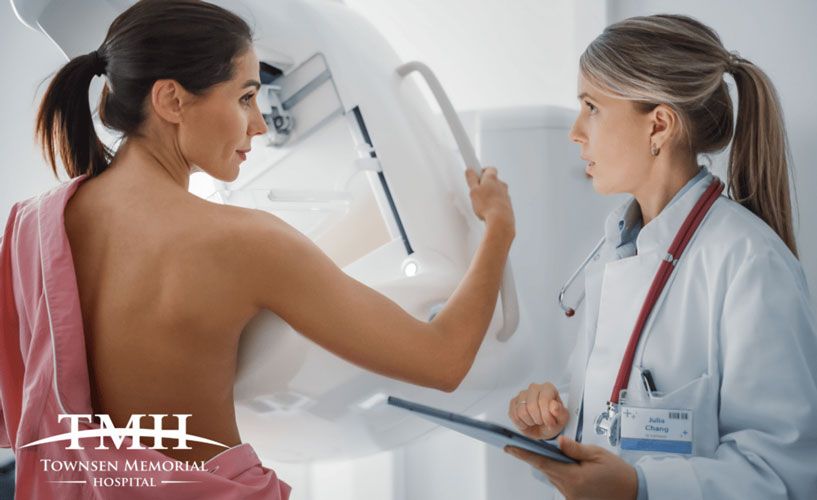Reducing Breast Cancer Risk Factors With 5 Easy Steps

Breast Cancer Risk Factors And 5 Easy Ways To Reduce Them
October is Breast Cancer Awareness Month, marking a good time to check in on your own breast health.
Breast cancer is a disease characterized by cell overgrowth in the breasts. There are several types of breast cancer; the type depends on which kind of cells are turning into cancer. While several studies have shown that your risk of breast cancer is a combination of a variety of factors, there are some things you can do to reduce your risk of developing this type of cancer.
Symptoms Of Breast Cancer
Depending on the person, breast cancer symptoms can appear differently. Some people do not show any symptoms, which is why it’s important to be sure you always complete your physical each year with your gynecologist.
Some of the more common symptoms of breast cancer include:
- New lump in the breast or underarm
- Thickening or swelling of part of the breast
- Irritation or dimpling of breast skin
- Redness or flaky skin in the nipple area or the breast
- Pulling in of the nipple or pain in the nipple area
- Nipple discharge other than breast milk, including blood
- Any change in the size or the shape of the breast
- Pain in any area of the breast
Breast Cancer Risk Factors
Any person’s risk level of breast cancer is based on a combination of factors. Being over age 50 is the biggest risk of breast cancer, though some others include:
- Genetic mutation: Women who have inherited changes (mutations) to certain genes, such as BRCA1 and BRCA2, are at higher risk of both breast and ovarian cancer.
- Dense breast tissue: patients with more connective than fatty tissue are more likely to develop breast cancer. Additionally, the connective tissue can make it harder to find tumors in regular mammograms.
- Reproductive health history: patients who had their period before age 12 and/or didn’t experience menopause until after 55 are more likely to get breast cancer due to being exposed to hormones over a longer period of time.
- Family history of breast or ovarian cancer: A patient's risk of developing breast cancer is higher if she has a mother, sister, or daughter (first-degree relative) who has had breast or ovarian cancer. Having a first-degree male relative with breast cancer also raises a patient’s risk.
Reducing Your Breast Cancer Risk
While there are several breast cancer risk factors you can’t do anything about, such as your family history or getting older, the following are risk factors you do have control over:
- Lack of physical activity: patients who don’t regularly exercise are more likely to develop breast cancer.
- Drinking alcohol: Studies show that a woman’s risk for breast cancer increases with the more alcohol she drinks.
- Being obese or overweight post-menopause: older patients who are overweight or obese are at a higher risk of breast cancer.
- Hormone therapy: hormones taken during menopause can raise risk for breast cancer when taken for more than five years. Additionally, certain contraceptives have been linked to higher risks of breast cancer.
- Reproductive history: Having the first pregnancy after age 30, not breastfeeding, and never having a full-term pregnancy can raise breast cancer risk.
Breast Cancer Treatment At Townsen Memorial
At Townsen Memorial, our family of hospitals are equipped with the latest in medical technology and cancer specialists. We strive to provide the best patient experience across all Townsen Memorial affiliated sites. Our standard of high-quality care starts at our Emergency Room and carries on through our Imaging Centers, Surgery Centers, and through our Hospital. Our medical sites are located in Houston, TX and the surrounding areas, to provide the best care to patients in and around Harris County. To learn more, visit our website or call 1-877-494-9487.